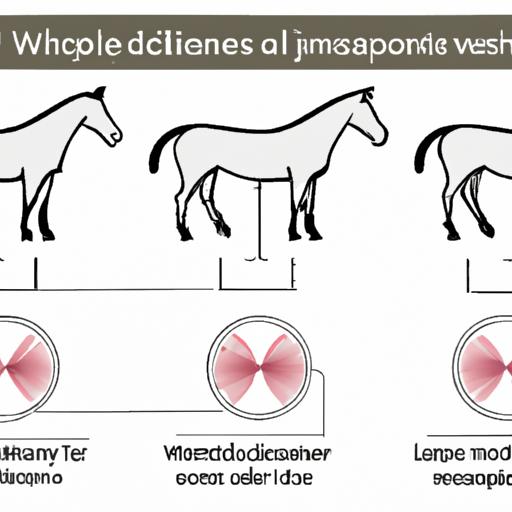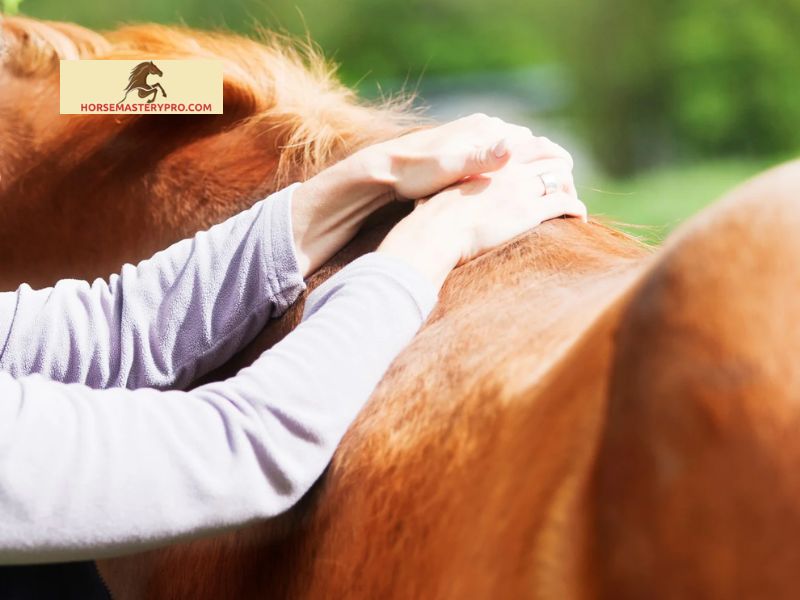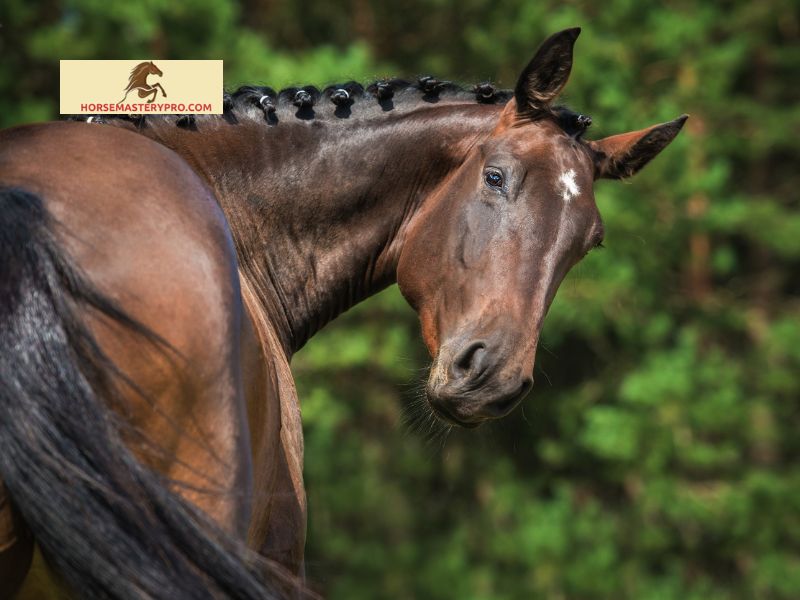Discover preventive measures and care for horses with wobbler syndrome. Learn about nutrition, exercise, and regular veterinary check-ups to ensure their well-being.
Introduction

Have you ever wondered why some horses seem to have difficulty maintaining balance or display unsteady movements? It could be a condition known as wobbler syndrome. Wobbler syndrome, also referred to as cervical vertebral instability, is a neurological disorder that primarily affects horses. In this article, I will guide you through the crucial aspects of understanding and addressing wobbler syndrome to ensure the well-being of these majestic creatures.
Wobbler syndrome is a condition that impacts a horse’s spinal cord and neck vertebrae, leading to difficulties in coordination and balance. It primarily affects young horses, particularly those of larger breeds, and can cause significant challenges in their daily activities. Recognizing the symptoms and seeking timely treatment is vital to improve their quality of life.
Addressing wobbler syndrome is of utmost importance to ensure the affected horses can lead fulfilling lives. By gaining a better understanding of this condition and its implications, we can take necessary measures to alleviate their discomfort and promote their overall well-being. So, let’s delve further into the intricacies of wobbler syndrome in horses and discover the best ways to tackle this condition head-on.
Remember, as horse enthusiasts, it is our responsibility to equip ourselves with knowledge about the potential health issues our equine companions may face. By doing so, we can provide them with the care and support they need to thrive. So, let’s embark on this journey together and learn about wobbler syndrome in horses.
Stay tuned for the next section, where we will explore the causes and risk factors associated with wobbler syndrome, shedding light on the factors that contribute to its development.
Note: horsemasterypro.com
Understanding Wobbler Syndrome in Horses

Definition of Wobbler Syndrome
Wobbler syndrome, scientifically known as cervical vertebral instability, is a neurological disorder that affects the spinal cord and neck vertebrae of horses. This condition is characterized by compression or malformation of the spinal cord, leading to impaired coordination and balance in affected horses. It primarily occurs in young horses, particularly those of larger breeds, and can manifest in various ways.
Causes and Risk Factors
Several factors contribute to the development of wobbler syndrome in horses. One of the primary causes is an abnormality in the growth and development of the cervical vertebrae, which can result in compression of the spinal cord. This abnormality may be influenced by genetic factors, nutritional imbalances, or even trauma.
Additionally, rapid growth spurts in young horses can also play a role in the development of wobbler syndrome. The disproportionate growth of the horse’s body in relation to the development of its skeletal system can cause instability in the cervical vertebrae, leading to compression of the spinal cord.
Common Symptoms and Signs
Recognizing the symptoms and signs of wobbler syndrome is crucial for timely intervention. Horses affected by this condition may exhibit a range of symptoms, including unsteady gait, stumbling or tripping frequently, difficulty backing up, and an abnormal head or neck position. Some horses may also display muscle atrophy, particularly in the hindquarters.
It is important to note that these symptoms can vary in severity and may worsen over time if left untreated. If you notice any of these signs in your horse, it is essential to consult a veterinarian promptly for an accurate diagnosis and appropriate treatment.
In the next section, we will explore the diagnostic procedures used to confirm wobbler syndrome in horses. Understanding how this condition is diagnosed will help us take the necessary steps towards effective treatment and management.
Note: horsemasterypro.com
Diagnosing Wobbler Syndrome in Horses

Diagnostic Tests and Procedures
When it comes to diagnosing wobbler syndrome in horses, veterinarians employ various tests and procedures to confirm the presence of this condition. These diagnostic methods help to differentiate wobbler syndrome from other conditions with similar symptoms. One of the primary diagnostic tools is radiography, which involves taking X-ray images of the horse’s neck. These images can reveal abnormalities in the vertebrae, such as compression or malformation, which are indicative of wobbler syndrome.
In addition to radiography, veterinarians may also use advanced imaging techniques like magnetic resonance imaging (MRI) and computed tomography (CT) scans. These imaging methods provide detailed and cross-sectional views of the horse’s neck, aiding in the accurate diagnosis of wobbler syndrome.
Importance of Consulting a Veterinarian
If you suspect that your horse may be suffering from wobbler syndrome or experiencing related symptoms, it is crucial to consult a veterinarian promptly. Veterinarians possess the expertise and experience to conduct a thorough examination and perform the necessary diagnostic tests. Proper diagnosis is essential for developing an appropriate treatment plan tailored to your horse’s specific needs.
Attempting to self-diagnose or ignoring the symptoms can lead to delays in treatment and potentially worsen your horse’s condition. Remember, a veterinarian’s professional evaluation is crucial in accurately diagnosing wobbler syndrome and ruling out other conditions with similar symptoms.
Identifying Other Conditions with Similar Symptoms
While wobbler syndrome may present with distinct symptoms, there are other conditions that can manifest similar signs. Some of these conditions include spinal cord injuries, equine protozoal myeloencephalitis (EPM), and cervical arthritis. It is essential for veterinarians to carefully evaluate the horse’s medical history, perform a comprehensive physical examination, and conduct the appropriate diagnostic tests to distinguish between these conditions.
By accurately diagnosing wobbler syndrome and ruling out other potential causes, veterinarians can develop an effective treatment plan to address the specific needs of the affected horse.
In the next section, we will explore the available treatment options for managing wobbler syndrome in horses, offering hope for improved mobility and a better quality of life for these magnificent creatures.
Treatment Options for Wobbler Syndrome in Horses
Medical Management Approaches
When it comes to treating wobbler syndrome in horses, medical management plays a crucial role. Veterinarians may prescribe various medications and supplements to help alleviate symptoms and improve the horse’s condition. Non-steroidal anti-inflammatory drugs (NSAIDs) are commonly used to reduce inflammation and provide pain relief. Additionally, muscle relaxants may be prescribed to help relax tense muscles and improve mobility.
Supplements such as chondroitin sulfate and glucosamine are often included in the treatment regimen. These supplements aim to support joint health and promote cartilage repair, which can be beneficial for horses with wobbler syndrome. It’s important to consult with a veterinarian to determine the appropriate dosage and administration of these supplements.
Surgical Interventions
In severe cases of wobbler syndrome, surgical interventions may be necessary to provide long-term relief. One common surgical procedure is cervical fusion, where the affected vertebrae are fused together to stabilize the neck. This procedure aims to alleviate pressure on the spinal cord and improve overall stability. However, it is important to note that surgical interventions come with risks and should be carefully considered after thorough evaluation and consultation with a veterinarian.
Rehabilitation and Physical Therapy Techniques
Rehabilitation and physical therapy techniques are crucial components of the treatment plan for horses with wobbler syndrome. These techniques aim to improve muscle strength, coordination, and overall mobility. Under the guidance of a professional equine therapist, horses may undergo exercises such as controlled walking, stretching, and balance training. Additionally, hydrotherapy, using water as a medium for exercise, can provide low-impact conditioning and aid in the recovery process.
Rehabilitation and physical therapy sessions are tailored to the individual horse’s needs and can significantly contribute to their overall well-being. It is essential to work closely with a qualified therapist to ensure the exercises are performed safely and effectively.
In the next section, we will delve into preventive measures and care strategies that can help manage wobbler syndrome in horses and improve their quality of life.
Note: horsemasterypro.com
Conclusion
In conclusion, understanding and addressing wobbler syndrome in horses is vital for their well-being and quality of life. By recognizing the symptoms, seeking accurate diagnosis, and exploring appropriate treatment options, we can provide the necessary care and support for horses affected by this condition.
To prevent the onset of wobbler syndrome and support horses with the condition, it is crucial to prioritize preventive measures and ongoing care. This includes ensuring proper nutrition and following diet recommendations tailored to their specific needs. A well-balanced diet can contribute to their overall health and minimize the risk of complications.
Additionally, implementing exercise and conditioning programs can promote muscle strength and coordination, aiding in the management of wobbler syndrome. Regular physical activity, under the guidance of a veterinarian or equine professional, can help horses maintain their mobility and improve their overall well-being.
Furthermore, regular veterinary check-ups and monitoring are essential to identify any potential complications or changes in the horse’s condition. By staying proactive and vigilant, we can address any concerns promptly and ensure that the horse’s treatment plan remains effective and appropriate.
Remember, as horse enthusiasts and caretakers, it is our duty to prioritize the health and well-being of these magnificent creatures. By staying informed, seeking professional guidance, and providing the necessary care, we can make a positive impact in the lives of horses affected by wobbler syndrome.
If you suspect that your horse may be experiencing symptoms related to wobbler syndrome, do not hesitate to consult with a qualified veterinarian. They can provide a comprehensive evaluation, accurate diagnosis, and guide you through the appropriate treatment options.
For more informative articles and expert advice on horse care, visit horsemasterypro.com. Together, let’s ensure the well-being and happiness of our beloved equine companions.
Note: horsemasterypro.com


